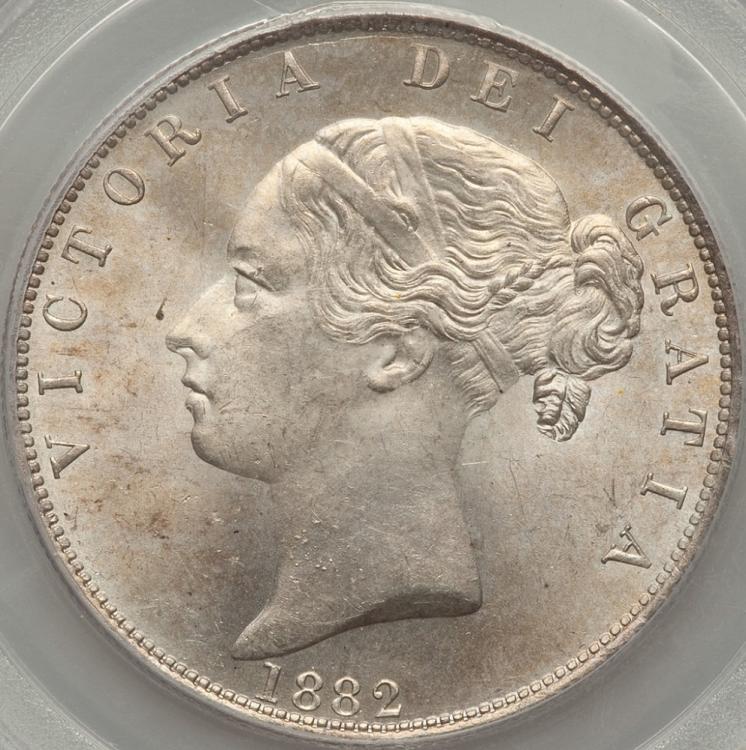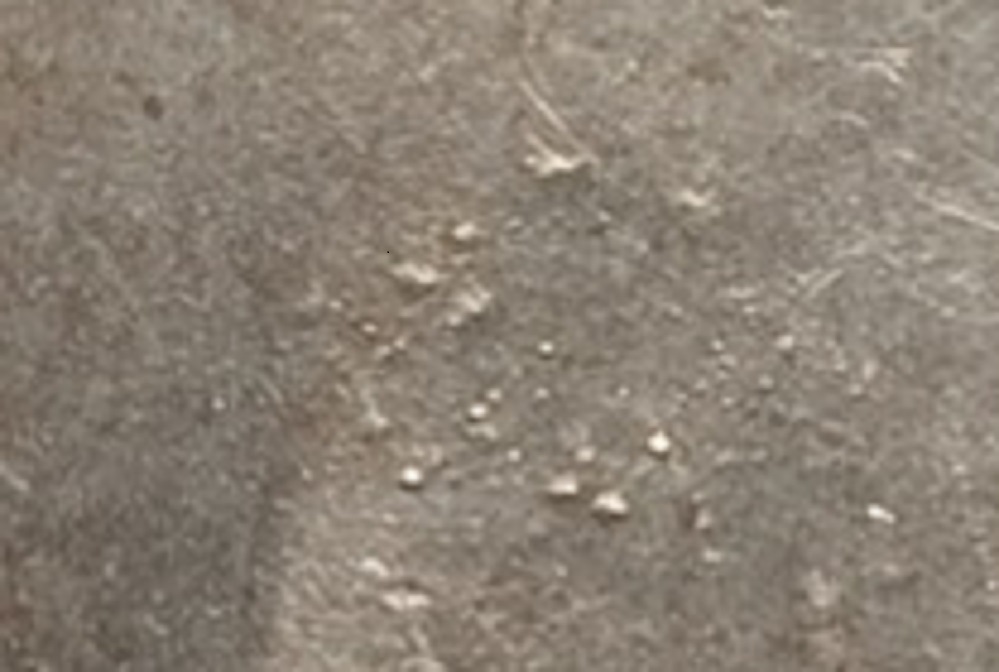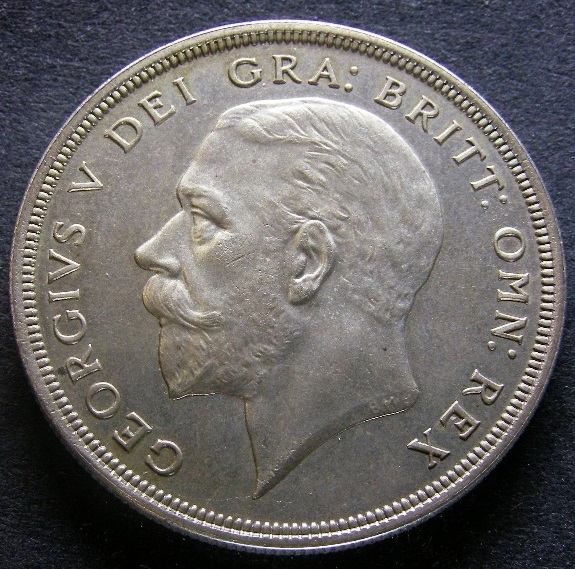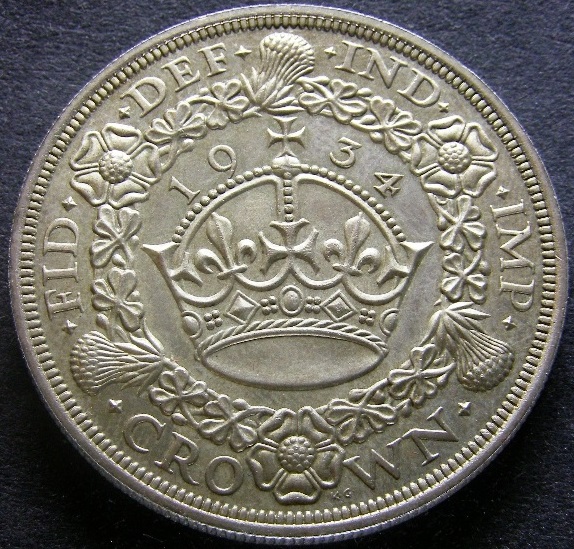
youliveyoulean
Unidentified Variety-
Posts
91 -
Joined
-
Last visited
-
Days Won
1
Content Type
Profiles
Forums
Events
Downloads
Store
Gallery
Articles
Everything posted by youliveyoulean
-
you mention using inferior materials for the pccb slabs - i'm pretty sure ngc will source their basic slabs from china or the like, then modify the slab in some tiny way when received so that they can claim it was "made in the usa" for their own purposes. can't think of a reason why the makers of the slabs in china would use different materials. it's already very cheap stuff and like I mentioned, the slabs are VERY similar.
-
more FAKES
youliveyoulean replied to numismatist's topic in British Coin Related Discussions & Enquiries
-
Beware the Slabs, Today's Story of the 1845 1/2 Crown
youliveyoulean replied to VickySilver's topic in TPG Discussions
The 1st coin has bags more eye appeal for me. As for the grading, don't beat yourself up working out the merits of either. You may as well wet your finger, stick it in the air and see which way the wind is blowing. -
more FAKES
youliveyoulean replied to numismatist's topic in British Coin Related Discussions & Enquiries
Hi Rob, I only say it's a proof because the TPG in question has attributed it as so - my immediate reaction was it's not a proof based on sharpness of strike (edges and teeth being the first place I looked as you already mention), although I haven't seen enough to know for sure. I seem to recall someone on the board who had plenty mentioning that the strike on the proofs was particularly poor making them difficult to spot. -
more FAKES
youliveyoulean replied to numismatist's topic in British Coin Related Discussions & Enquiries
Hi, I'm trying to learn how to about fakes and how to spot them. the information on the web seems to be very unsatisfactory (the issue seems to be brushed under the carpet with check the weight, feel, smell, magnet test, learn from experience etc.) and was hoping someone could point me towards any useful resources. Perhaps anyone connected to the BNTA? I'm sure it's fine but just curious about this slabbed coin and wondered what others thought? Hopefully the download is clear enough. To my relatively untrained eye, from what I've managed to read, it would appear to have all the hallmarks of casting or something of that ilk. Can anyone explain the raised and incuse divots appearing on both sides of the coin under magnification? On the obverse, particularly around the high cheek and along the ear. I've seen this on a few of these 1934 crowns now and it does not seem to me to be natural wear! FYI this is a proof example. Also on the reverse, the vertical beading in the middle of the crown shows signs of wear with what appears to be a small divot in the middle of each bead? Thanks in advance to the experts out there who can put me to rights! -
Clearly flawless
-
Hi, just wanted a few comments on this. I've been studying and collecting silver George V coinage extensively for a few years now and from my observations, it appears that the introduction of the modified effigy was staggered starting with the threepence and finishing with the halfcrown. The 2nd head currency 3p is quite rare (extremely in high grades) with the modified 3rd head much more common. Conversely, the 2nd head halfcrown seems to be more common than the modified head halfcrown of the same year. I've had it on good authority from someone who collects sixpences that he sees several modified heads to every one old head 1926 which seems to fit. Any thoughts? I'm curious why ESC specifically comments and states the old head halfcrown is rarer as I would be surprised if that is the case.
-
Hi all, can anyone suggest any shares listed which would be a good hedge against silver prices rising? Actual shares and not derivatives, bullion etc. Thanks in advance for any suggestions.
-
Agreed Jaggy. Not too keen on ESC myself these days as I've gained more experience over time and the population statistics with TPGs get larger. Surely, eventually, physical evidence by TPGs, ebay listings and auction houses etc. should outweigh an opinion by the authors formed from a time before the internet! That's no disrespect to the work they did but we're at a different point now. Am I right in thinking something that is rare (a measure of frequency) and something that is scarce (implying demand) are two totally different things yet ESC uses them interchangeably? As someone already mentioned, you may have a very rare coin but unless there are more collectors than coins available, it is not very scarce. Not every rare coin is desirable and rightly so. Every coin is unique after all..........
-
The 1934 Wreath is another great example - always around at auction for hefty sums - and yet not very scarce. Are scarcity and mintage figures being confused by buyers? Another artificially priced coin? FYI 94 Secundos graded at MS63 and above with PCGS and NGC - I don't know about CGS. There will be some duplication in those figures with crossovers but still typically 5 - 10 times higher than most crowns for the high grades. As mentioned by Tom, numbers are very high for all the first year of issues - I understand why they're high but do not understand the pricing of these coins as they're all so readily available (relatively speaking!). Looking across the board, without doing the Math because I don't know how, there appears to be a very strong correlation between scarcity (represented by population figures) and prices realised with notable exceptions.
-
Thanks Tom - I would consider scarcity and breadth of collector base to be directly related (ie the more collectors, the more scarce something is). If you don't have a huge amount of money, why would you try and 'type' collect crowns in high grades? Do type collectors still always home in on the 1st year of issue then regardless of cost, scarcity? I've read in the old days they used to....this only makes sense at the time if you don't know how many years a coin will be issued. Now, with the benefit of hindsight, would they still collect the first year of issue? Forgive me, I know nothing of hammered coinage - so are you saying you see 6 of these shillings pop up at every auction similar to the Secundo? That would suggest they're not very scarce unless the collector base is particularly high? Good point about the length of reign Azda, but again I still contend these are very common and there are more sellers than buyers unless the 'churn' rate of these coins is high (fickle collectors buying and selling extremely quickly). The only other conclusion would be prices are kept artificially high by the auction houses by refusing to sell below a certain price (and thus stockpiling) or a sudden onslaught of fakes which would skew the supply-demand relationship in the short term but I'm sure the auction houses know what they're doing with regards to that. I contend therefore that somebody somewhere must be sitting on hundreds of these crowns and prices will inevitably drop!
-
Hi all, something that's been bothering me for some time now is the value placed on certain coins and how they came to be. Can we agree, generally speaking, scarcity and condition are the driving factors (although not always)? As an example (and apologies in advance if I'm bad mouthing a coin in your collection!), I can't for the life of me work out why say an 1821 Secundo Crown can be valued so highly when compared to an 1896 LIX Crown. In high grades, one goes for thousands and the other for hundreds. It's older yes and possibly more attractive but undoubtedly much more common (see population statistics with TPGs, no. of appearances at auctions, ESC attribution). Whenever I see 6 of these come up at just one auction, I always wince. Can anyone explain or give similar examples as food for thought?
-
Buying coins from the US
youliveyoulean replied to youliveyoulean's topic in British Coin Related Discussions & Enquiries
Thanks all. Very useful. -
Buying coins from the US
youliveyoulean replied to youliveyoulean's topic in British Coin Related Discussions & Enquiries
Thanks for the quick reply. Much appreciated. -
Hi all, I was considering buying a coin from a us dealer and was curious what the taxes and duties would look like. There is an article on here from 2011 but I'm sure things must have changed since then! If I use an example of a silver coin which cost £2,000 and it was to be couriered, could anyone give me an idea of the total amount in additional costs for taxes and duties etc.? Are there any tax exemption forms which may reduce the cost? Thanks in advance,
-
Fake 1923 Halfcrown?
youliveyoulean replied to youliveyoulean's topic in British Coin Related Discussions & Enquiries
have emailed the guy as he has excellent feedback and may have just mixed his photos up.. -
are my eyes deceiving me or is that the 3rd coinage obverse with a 1923 reverse for sale on ebay? Haven't seen this before...
-
A great article - the point about 'gift grades' is what troubles me the most. This is most obvious on the modern coins which get a grade of either MS69 or MS70 when they're hot off the press depending on who send them in for grading with the MS70 seemingly commanding a hefty premium. Collecting the slab at this point just reaches the height of stupidity. If the TPGs 'consistently' overgraded then at least there would be 'consistency' and the market would settle down! The trouble is they don't and it will come back to bite them on the ass. A lot of larger dealers submitting large quantities (check ebay) are all getting very average coins slabbed as MS64 / MS65 whereas the average punter on the street gets the same coin back as say MS61 or MS62. If the grading companies don't work at being consistent they are doomed to fail as more and more articles such as this surface and become common knowledge. I fact, nearly all of them do eventually fail! You can't go wrong if you collect the coin and not the slab.
-
IanB:- I would but I don't want my allowance cut! azda:- I want to keep all of them! I like them all for different reasons but my question is which do you think will be increase in value as that would be the deciding factor. I think talking individual coins or size of collection is going off course but if you want a specific example, lets say a BU 1934 George V halfcrown vs a 2001 Victorian Era £5 Reverse frosted Silver proof issued by the Royal Mint (mintage 596 I think so fairly scarce). Peter:- So I'll put you down for holding on to the modern silver proofs then!
-
Hi all, my wife has asked me to trim down my coin collection and it's been keeping me awake at night. I've been thinking do I sell some of each type and keep a few of each, dispose of my modern coinage entirely (Royal Mint silver, gold proofs etc.) or dispose of my older coinage entirely (mainly George V and Victoria)? I'm thinking long term value. Which coins will fare better in the long run and why? From my own experience, the upcoming generation of coin collectors would seem to much prefer the modern coinage. I guess one could argue a case for them having more eye appeal with these frosty, deep cameo appearances etc. They could also be viewed as more interesting as they tend to have a unique theme struck on the reverse which older coins don't have so you're not just collecting dates. Finally, the mintage figures are well documented so little or no research would be required to form opinions on scarcity, desirability etc. which means less time spent forming a collection (impatient lot these youngsters!). I'd be interested to hear any views on this which may help me rest a little easier.
-
Rarest Silver Proof issued by the Royal Mint?
youliveyoulean replied to youliveyoulean's topic in Decimal Coins
sorry mike you may have a few wires crossed here - there are 2 threads running - as far as i can see the 500 mintage for the brtiannia is not in dispute. PS i'd be surprised if any of the 2016 figures for any coins would be released yet. -
Rarest Silver Proof issued by the Royal Mint?
youliveyoulean replied to youliveyoulean's topic in Decimal Coins
i have seen it on the royal mint certificate somewhere on ebay - the maximum coin mintage is definitely 500.







